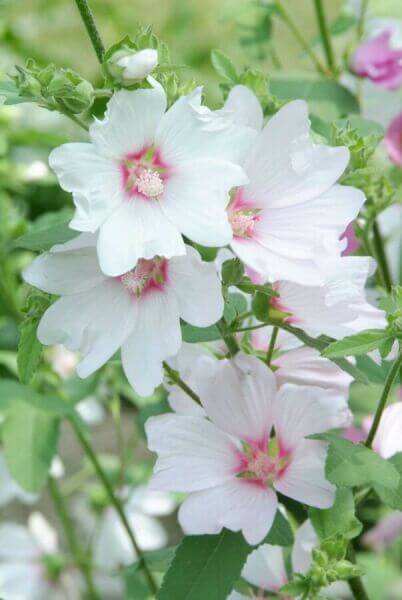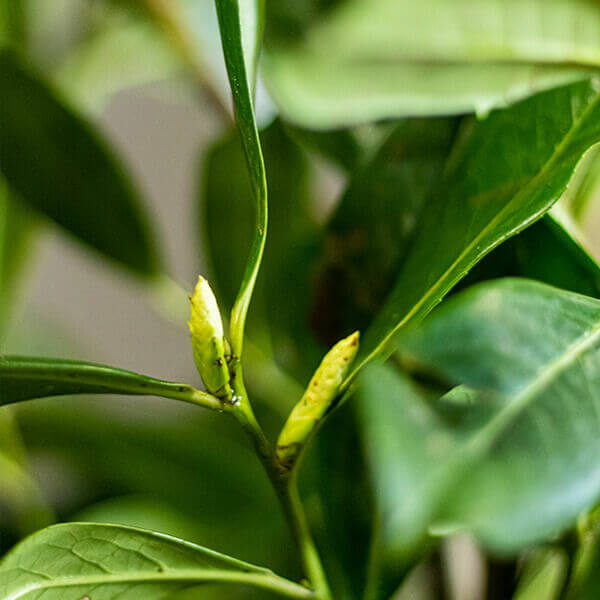Hedge Plants For Sound Barriers
Hedge Plants For Sound Barriers
Blog Article
Best Hedging Plants For Fast Growth
Boost your garden's allure with rich hedge ranges such as Yew (Taxus), Thuja, Laurel, Photinia, and Bamboo, celebrated for their structural stability and environmental advantages.
Yew and Thuja provide evergreen protection and winter season strength, while Laurel provides rapid development and broad, fragrant leaves.
Photinia includes seasonal beauty with its lively red foliage, and Bamboo provides a low-maintenance, tranquil ambiance.
These hedges enhance air quality, reduce sound, and create tranquil, private areas.
Correct planting, spacing, and upkeep make sure energetic development and environmental consistency.
Explore how these rich ranges can elevate your garden's appeal and well-being.
Key Takeaways
Change Your Garden With Lush Hedge Ranges
- Select Yew for its dense, evergreen growth and exceptional durability.
- Opt for Laurel for its fast development and broad leaves, making sure quick privacy.
- Select Photinia for its lively seasonal foliage, which turns a striking dark red.
- Make use of Bamboo for a low-maintenance, winter-hardy hedge with visual appeal.
- Area plants 2-3 per meter and prune routinely for optimum growth and health.
Popular Hedge Plants
When transforming a garden with lush hedge varieties, it's vital to think about popular hedge plants such as Yew, Thuja, Laurel, and Photinia due to their special characteristics and benefits.
Yew (Taxus) is extremely respected for its durability and dense, green growth, making it a prime choice for withstanding landscapes.
Thuja is noted for its evergreen foliage and robust winter season strength.
Photinia includes seasonal vibrancy with red leaves that darken with time, developing vibrant visual appeal.
Laurel provides fast growth and fragrant, broad leaves, suitable for fast privacy.
Additionally, Bamboo is an outstanding choice for ambiance, using a low-maintenance, winter-hardy alternative that improves the garden's visual with its classy, swaying walking canes.
These choices accommodate a variety of horticultural requirements and preferences.
Benefits of Garden Hedges
Garden hedges use a multitude of benefits, making them an important addition to any landscape. These natural barriers are economical to implement and supply considerable wind protection, boosting air blood circulation and contributing to noise reduction. The thick foliage of hedges like Thuja and Beech guarantees privacy by obstructing presence, creating a serene and remote environment.
Hedges also play a vital role in microclimate guideline, providing a steady environment that cultivates plant growth and decreases temperature variations. Their elaborate leaf structures filter contaminants, enhancing air quality and contributing to a much healthier garden environment.
Moreover, hedges master noise reduction, taking in and deflecting acoustic waves to lower ambient sound levels. This dual performance of supplying both visual and acoustic personal privacy improves the total tranquility and aesthetic appeal of any garden.
Planting and Upkeep Tips
For an effective hedge, meticulous preparation of the planting area is essential. Guarantee the soil has correct pH and drain to support strong root development.
Space the plants appropriately for the selected species. Water the hedge often during its preliminary development stage, changing as required with seasonal modifications.
Carry out a organized bug control and illness avoidance method, utilizing chemical or natural treatments when essential. Regularly examine for aphids, termites, and fungal infections.
Apply mulch to keep moisture and suppress weeds. Seasonal pruning promotes dense growth and air circulation, essential for plant health.
Following these guidelines will assist you cultivate a lively, properly maintained hedge that boosts the charm of your garden.
Spacing and Trimming Guidelines
Spacing and Cutting Standards
Appropriate spacing and trimming are crucial for cultivating healthy, aesthetically appealing hedges. Sufficient spacing guarantees each plant receives enough nutrients, light, and air flow.
Follow these guidelines for optimal hedge upkeep:
- Spacing: Position hedge plants 2-3 plants per meter to encourage robust growth.
- Pruning Strategies: Regular pruning is essential for keeping preferred hedge height and shape. Cut brand-new growth in summer season and cut back older wood throughout winter.
- Seasonal Care: Adjust cutting approaches and schedules according to seasonal requirements to guarantee plant health.
- Hedge Height: Regularly screen and trim to preserve the desired hedge height and achieve uniform visual appeals.
Sticking to these steps will guarantee your hedge thrives, improving both the appeal and functionality of your garden.
Selecting the Right Hedge
Picking the Right Hedge
Selecting the suitable hedge includes assessing aspects such as mature height, foliage density, and environmental strength. Effective hedge plant selection requires comprehending each types' growth qualities and site-specific adaptability.
For example, Yew (Taxus) uses exceptional longevity and dense development, while Thuja is significant for its winter resilience. Furthermore, thinking about upkeep requirements is vital; fast-growing species like Laurel or Privet demand regular trimming, whereas low-maintenance choices like Bamboo or Ivy may be more effective for those looking for very little maintenance.
Ecological aspects such as soil type, light availability, and moisture conditions should also guide the selection process. This careful approach ensures the chosen hedges will thrive, providing both aesthetic and practical advantages to the garden landscape.
Shipment and Planting Guidance
To ensure your hedge plants thrive, they should be provided by specialized carriers and planted immediately upon arrival.
Follow these vital steps for successful planting:
- Soil Preparation: Enrich the soil with raw material to enhance drainage and nutrient content.
- Planting Depth: Develop a trench two times the width and equal to the depth of the root ball.
- Watering Techniques: Water completely after planting, keeping the soil regularly moist however not filled.
- Mulching: Apply a layer of mulch to maintain wetness and suppress weeds.
Consumer Support and Service
Given the vital role of timely help in horticultural pursuits, our customer assistance team is readily available 6 days a week through telephone, email, and social networks to offer skilled recommendations and swiftly attend to any issues. Their commitment to quick action times guarantees customer fulfillment by dealing with questions associated with plant health, optimum planting methods, and upkeep schedules.

-------------------
Telephone
This detailed support group, reinforced by an excellent 9.3/ 10 client ranking, highlights our dedication to enhancing the gardening experience for every single client.
Frequently Asked Concerns
How Long Does It Consider Hedge Plants to Establish?
Hedge plants usually require one to 3 years to become totally established, with the precise duration varying by types and growing conditions.
Efficient care throughout this crucial duration is essential for robust development. Constant watering, watchful weed control, and proper fertilizer application are pivotal in promoting strong root advancement.
For instance, fast-growing species like Laurel may develop more quickly, while slower-growing varieties such as Yew may take longer. Diligent maintenance speeds up the facility process, resulting in thick and healthy hedges.
What Are the Best Hedge Plants for Privacy?
The concern of the finest hedge plants for privacy involves assessing evergreen and deciduous alternatives.
Evergreen hedges like Thuja, Laurel, and Cypress provide year-round coverage, guaranteeing continuous privacy.
In contrast, deciduous hedges such as Beech provide seasonal personal privacy, shedding leaves in cooler months.
Secret maintenance suggestions for privacy hedges include regular cutting, fertilizing in spring, and appropriate spacing-- normally 2 to 3 plants per meter.
In addition, constant watering and thorough weed elimination are crucial for promoting healthy, dense growth.
Can Hedge Plants Attract Wildlife to My Garden?
Yes, hedge plants can attract wildlife to your garden by providing essential benefits like shelter, food, and nesting websites, therefore boosting regional biodiversity. For circumstances, yew, holly, and laurel are outstanding for drawing in birds, while ivy supports a variety of insects.
Nevertheless, it is essential to note that there are some drawbacks, such as increased upkeep to manage pests and regular maintenance. Carefully selecting and keeping hedge ranges can help stabilize these advantages and disadvantages, ultimately cultivating a lively and sustainable ecosystem in your garden.
Exist Any Flowering Hedge Plants Available?
Yes, there are flowering hedge plants readily available that can improve the beauty of your garden.
For instance, Elaeagnus, also understood as Olive Willow, produces fragrant white flowers in the fall, including a touch of beauty.
Photinia, another popular option, showcases dynamic red leaves that mature into a rich green, developing a dynamic visual result throughout the seasons.
To guarantee these plants thrive, it's vital to practice proper pruning methods and seasonal upkeep, such as trimming brand-new development in the summertime and cutting down in the winter.
These steps will assist maintain the health and aesthetic appeal of your blooming hedges.
How Do I Prevent Insects in My Hedge Plants?
To avoid bugs in hedge plants, employ natural insect control approaches and maintain appropriate hedge care. Present beneficial insects like ladybugs, which take advantage of damaging pests, to create a balanced environment.
Frequently inspect your hedges for signs of invasion and without delay eliminate any afflicted parts to prevent the spread. Make sure the health of your get more info hedges by using balanced fertilizers and providing sufficient water.
Use mulching to keep soil wetness and appropriate spacing to lower plant tension and promote robust development. These practices jointly assist in minimizing insect concerns and keeping a healthy hedge.
Conclusion
In essence, picking the ideal hedge ranges such as Yew, Thuja, and Laurel can change any garden into a relaxing sanctuary. These plants offer year-round greenery, enhance aesthetic appeal, and deal useful advantages like noise reduction and wind protection.
Proper planting strategies, precise spacing, constant watering, and seasonal trimming are vital for optimal development.
Reliable shipment services and professional client support make sure a smooth experience from purchase to planting, making it simpler than ever to raise your outside space.
Garden hedges use a wide variety of benefits, making them a valuable addition to any landscape. These natural barriers are cost-efficient to execute and provide significant wind security, enhancing air blood circulation and contributing to noise reduction. The thick foliage of hedges like Thuja and Beech ensures personal privacy by obstructing presence, producing a serene and remote environment.

Pruning Strategies: Routine pruning is necessary for keeping preferred hedge height and shape. Trim new development in summer season and cut back older wood throughout winter.
Report this page